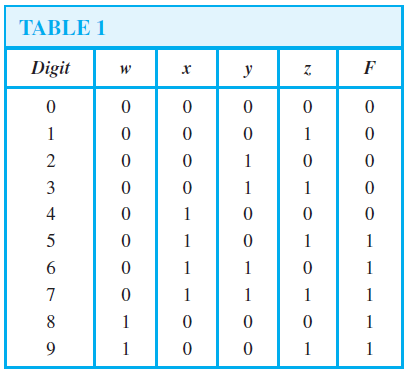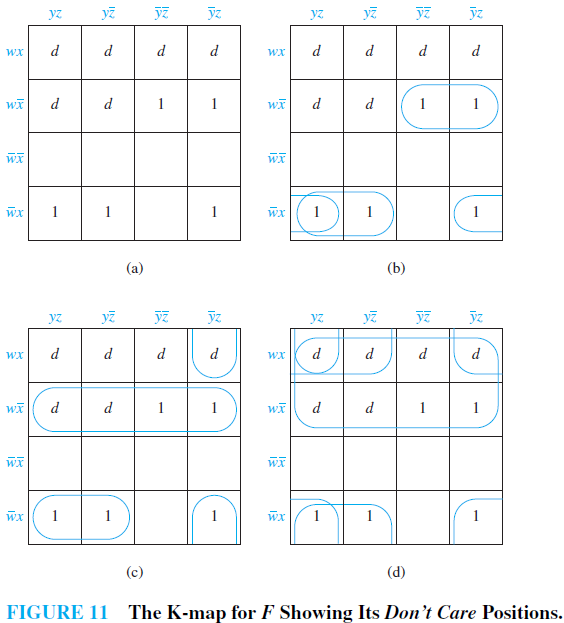Don’t Care Conditions
Don’t Care Conditions
In some circuits we care only about the output for some combinations of input values, because other combinations of input values are not possible or never occur. This gives us freedom in producing a simple circuit with the desired output because the output values for all those combinations that never occur can be arbitrarily chosen. The values of the function for these combinations are called don’t care conditions. A d is used in a K-map to mark those combinations of values of the variables for which the function can be arbitrarily assigned. In the minimization process we can assign 1s as values to those combinations of the input values that lead to the largest blocks in the K-map. This is illustrated in Example 1.
EXAMPLE 1 One way to code decimal expansions using bits is to use the four bits of the binary expansion of each digit in the decimal expansion. For instance, 873 is encoded as 100001110011. This encoding of a decimal expansion is called a binary coded decimal expansion. Because there are 16 blocks of four bits and only 10 decimal digits, there are six combinations of four bits that are not used to encode digits. Suppose that a circuit is to be built that produces an output of 1 if the decimal digit is 5 or greater and an output of 0 if the decimal digit is less than 5. How can this circuit be simply built using OR gates, AND gates, and inverters?
Solution: Let F(w, x, y, z) denote the output of the circuit, where wxyz is a binary expansion of a decimal digit. The values of F are shown in Table 1. The K-map for F, with ds in the don’t care positions, is shown in Figure 11(a). We can either include or exclude squares with ds from blocks. This gives us many possible choices for the blocks. For example, excluding all squares with ds and forming blocks, as shown in Figure 11(b), produces the expression  . Including some of the ds and excluding others and forming blocks, as
. Including some of the ds and excluding others and forming blocks, as


shown in Figure 11(c), produces the expression wx wxy xyz. Finally, including all the ds and using the blocks shown in Figure 11(d) produces the simplest sum-of-products expansion possible, namely, F(x, y, z) = w xy xz.